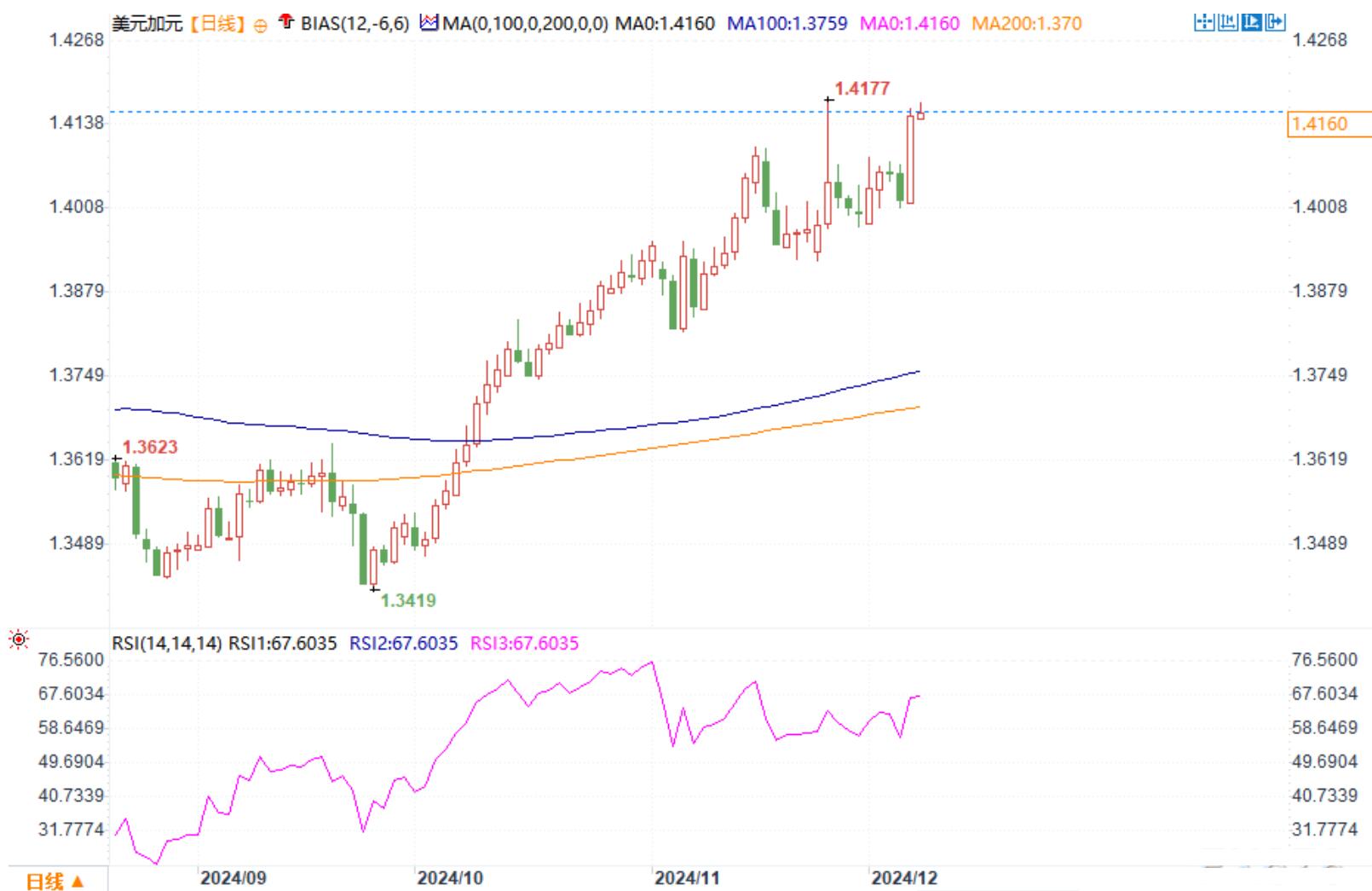The Japanese yen is under pressure, the Canadian dollar is bottoming out, and the New Zealand dollar is fluctuating: the market is focused on CPI and the Federal Reserve's decision!
On Monday, December 9th, after a brief rebound, the Japanese yen came under pressure, and the uncertainty of the Federal Reserve's interest rate cut and the Bank of Japan's interest rate hike became the focus of the market. The Canadian dollar fell to a multi-year low due to expectations of interest rate cuts, while the New Zealand dollar came under pressure due to increased demand for the US dollar. This week's US CPI data will determine the market direction.
After a brief rebound, the Japanese yen came under pressure, and the policies of the Federal Reserve and the Bank of Japan became the focus
On Monday, December 9th, the Japanese yen rose during the Asian trading session due to the upward revision of Japan's third quarter GDP data, but immediately attracted some selling and pushed the US dollar to rise above the 150.00 level against the Japanese yen. The market is divided on whether the Bank of Japan will raise interest rates in December or January next year, which has become a key factor in the relatively weak performance of the yen.
At the same time, the market's expectation that the Federal Reserve will cut interest rates in December has put pressure on US bond yields, which has also suppressed the willingness of yen bears to make more aggressive bets. In addition, geopolitical tensions and concerns about Trump's imminent implementation of trade tariffs may limit the downward space for the safe haven currency, the Japanese yen. The market is closely monitoring the upcoming release of US consumer inflation data this week to obtain more clues about the path of the Federal Reserve's interest rate cuts.
Technically speaking, analyst Haresh Menghani believes that the USD/JPY is currently in a bearish consolidation phase, and the indicators on the daily chart indicate that downward pressure still exists
In terms of support, the low point of 149.35 after the US non farm payroll report is the first support level, followed by the 149.00 level and the 100 day moving average. If the selling trend continues to follow, it may drag the USD/JPY to the 148.10-148.00 range, and even further target the 147.35-147.30 range and the 147.00 integer level;
In terms of resistance, the 150.55 area may constitute preliminary resistance, followed by the 150.70 level, the 151.00 integer level, and last week's high point in the 151.20-151.25 range. If these levels are broken, the USD/JPY may test the 200 day moving average.

Canadian dollar trend
On Monday, December 9th, the USD/CAD continued its upward trend in early European trading, reaching a level of approximately 1.4170. The Canadian dollar fell to a nearly four-and-a-half-year low due to market expectations that the Bank of Canada will significantly lower interest rates again at its meeting on Wednesday.
The market expects the Bank of Canada to cut interest rates by 50 basis points this Wednesday, bringing the benchmark rate to 3.25%. Shaun Osborne, Chief Foreign Exchange Strategist at Scotiabank, pointed out that the policy outlook of the Bank of Canada is suppressing the Canadian dollar, and from a technical perspective, the risk of the Canadian dollar continuing to decline in the short term remains high.
In addition, the possibility of Trump significantly increasing tariffs on Canadian imports has further intensified downward pressure on the Canadian dollar. Trump said he will propose a large-scale tariff hike on his first day in office.
Meanwhile, data from the US Bureau of Labor Statistics shows that the US added 227000 new jobs in November, exceeding market expectations of 200000. However, the unemployment rate rose from 4.1% in October to 4.2%. However, this data did not change the market's perception of a slowdown in the US labor market, but the speed was not sufficient to significantly alter the Federal Reserve's path of interest rate cuts. The US Consumer Price Index (CPI) and Producer Price Index (PPI) reports to be released this Wednesday and Thursday will serve as important references for the Federal Reserve's December interest rate decision.

New Zealand dollar performance
On Monday, December 9th, NZD/USD fell to around 0.5805 under pressure in early European trading, mainly due to increased demand for the US dollar. The US November CPI report, which will be released this Wednesday, has become the focus of market attention.
In terms of the US dollar, Federal Reserve officials seem to be preparing to lower interest rates in December. At present, the market believes that the probability of the Federal Reserve cutting interest rates by 25 basis points is 85.1%. Analysts point out that due to the recent significant increase in the US dollar, there may be profit taking in the short term, limiting the downside space of the New Zealand dollar.
The market generally believes that this week's inflation data in the United States may determine whether the Federal Reserve's interest rate cuts have a hawkish tendency. If the Federal Reserve suggests a pause in interest rate cuts, the US dollar may further strengthen.

Tips:This page came from Internet, which is not standing for FXCUE opinions of this website.
Statement:Contact us if the content violates the law or your rights
